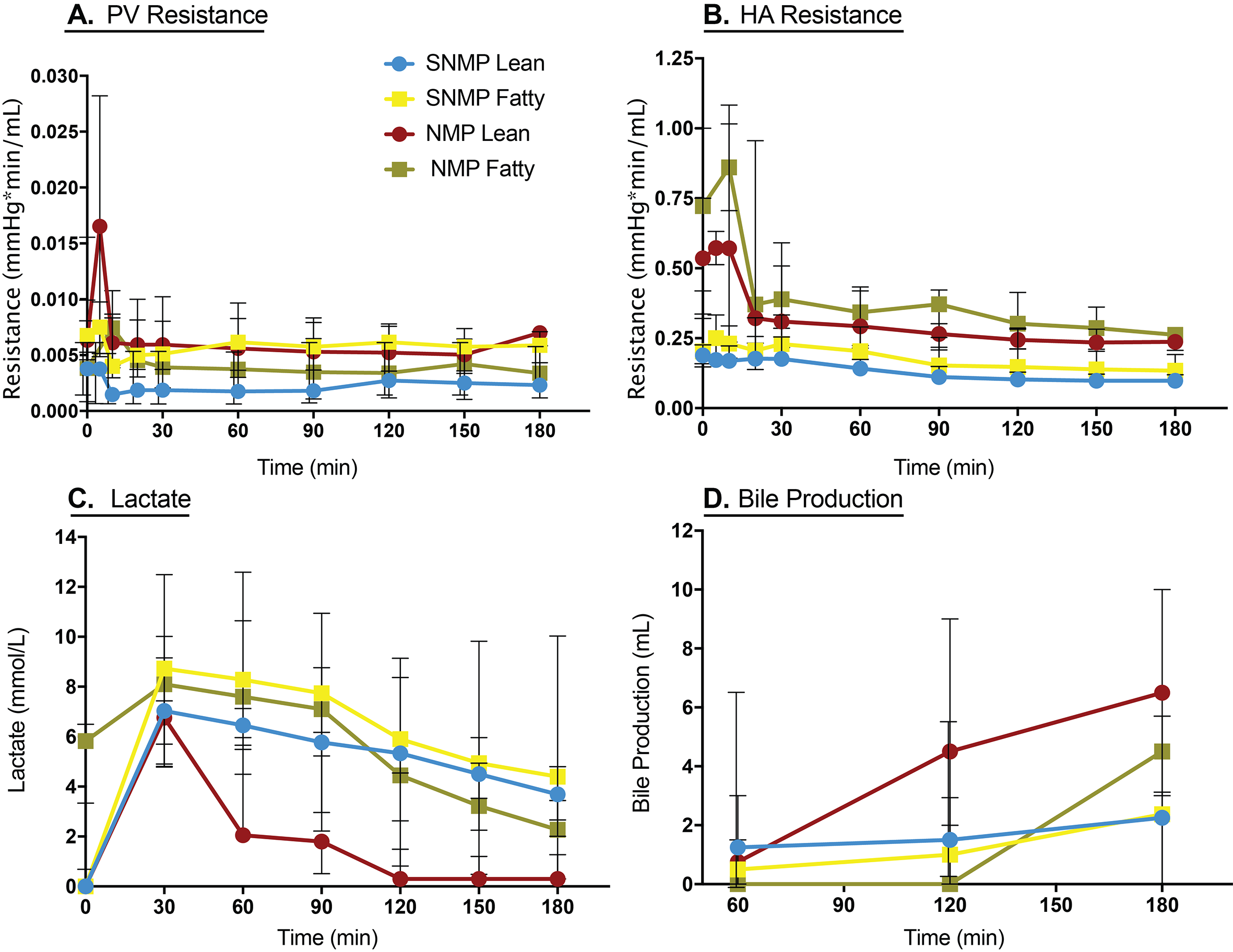Steatotic Human Livers Show Inferior Function Compared to Non-Steatotic Livers During Ex-Situ Viability Assessment by Oxygenated Machine Perfusion.
1Division of Transplantation, Massachusetts General Hospital, Boston
2Division of Transplantation, University Medical Center Groningen, Groningen, Netherlands
Meeting: 2017 American Transplant Congress
Abstract number: A167
Keywords: Donors, Liver transplantation, Machine preservation, marginal, Preservation solutions
Session Information
Session Name: Poster Session A: Ischemic Injury and Organ Preservation Session I
Session Type: Poster Session
Date: Saturday, April 29, 2017
Session Time: 5:30pm-7:30pm
 Presentation Time: 5:30pm-7:30pm
Presentation Time: 5:30pm-7:30pm
Location: Hall D1
Fatty livers are frequently declined for transplantation due to high risk of primary non-function. Ex-situ oxygenated machine perfusion (MP) is superior to static cold storage to preserve fatty livers. However, it is unknown whether simple perfusion alone is sufficient to render steatotic livers transplantable. We therefore assessed the function of fatty livers compared to lean livers during subnormothermic (21[deg]C) MP (SNMP) and normothermic (37[deg]C) MP (NMP).
Twenty human livers declined for transplantation with research consent were included. Fatty livers were defined as >30% macrovesicular steatosis by histology. 3 hrs SNMP (n=4 lean,n=10 fatty) or NMP (n=3 lean,n=3 fatty) with Williams E based perfusate were performed. The NMP perfusate included an artificial oxygen carrier.
Portal venous resistance (fig.1a) and hepatic arterial resistance (fig.1b) was relatively similar in all groups after the first 15 minutes with a decreasing trend. Perfusate lactate levels decreased over time, but more rapidly during NMP than SNMP (fig.1c). NMP fatty livers cleared lactate much more slowly than NMP lean livers, resulting in >7-fold higher lactate levels by the end perfusion. Similarly, both fatty and lean livers produced low amounts of bile on SNMP, fatty livers produced markedly less bile at NMP than lean livers (fig.1d).
Although vascular resistance was similar in fatty and lean livers, at SNMP and NMP, functional differences were quite pronounced only at NMP. This suggests that the low metabolic activity of SNMP may not be sufficient to distinguish impaired function in fatty livers. In addition, either longer perfusion times or additional therapeutics will likely be necessary to restore transplantability in steatotic livers.
Figure 1: Functional comparison between fatty livers and lean livers during SNMP and NMP as shown by PV (A) and HA resistance (B),Lactate levels (C) and bile production (D).
CITATION INFORMATION: Karimian N, Huang V, Fontan F, Aburawi M, Geerts S, Mert S, Beijert I, Porte R, Yarmush M, Uygun K, Markmann J, Yeh H. Steatotic Human Livers Show Inferior Function Compared to Non-Steatotic Livers During Ex-Situ Viability Assessment by Oxygenated Machine Perfusion. Am J Transplant. 2017;17 (suppl 3).
To cite this abstract in AMA style:
Karimian N, Huang V, Fontan F, Aburawi M, Geerts S, Mert S, Beijert I, Porte R, Yarmush M, Uygun K, Markmann J, Yeh H. Steatotic Human Livers Show Inferior Function Compared to Non-Steatotic Livers During Ex-Situ Viability Assessment by Oxygenated Machine Perfusion. [abstract]. Am J Transplant. 2017; 17 (suppl 3). https://atcmeetingabstracts.com/abstract/steatotic-human-livers-show-inferior-function-compared-to-non-steatotic-livers-during-ex-situ-viability-assessment-by-oxygenated-machine-perfusion/. Accessed December 7, 2025.« Back to 2017 American Transplant Congress
